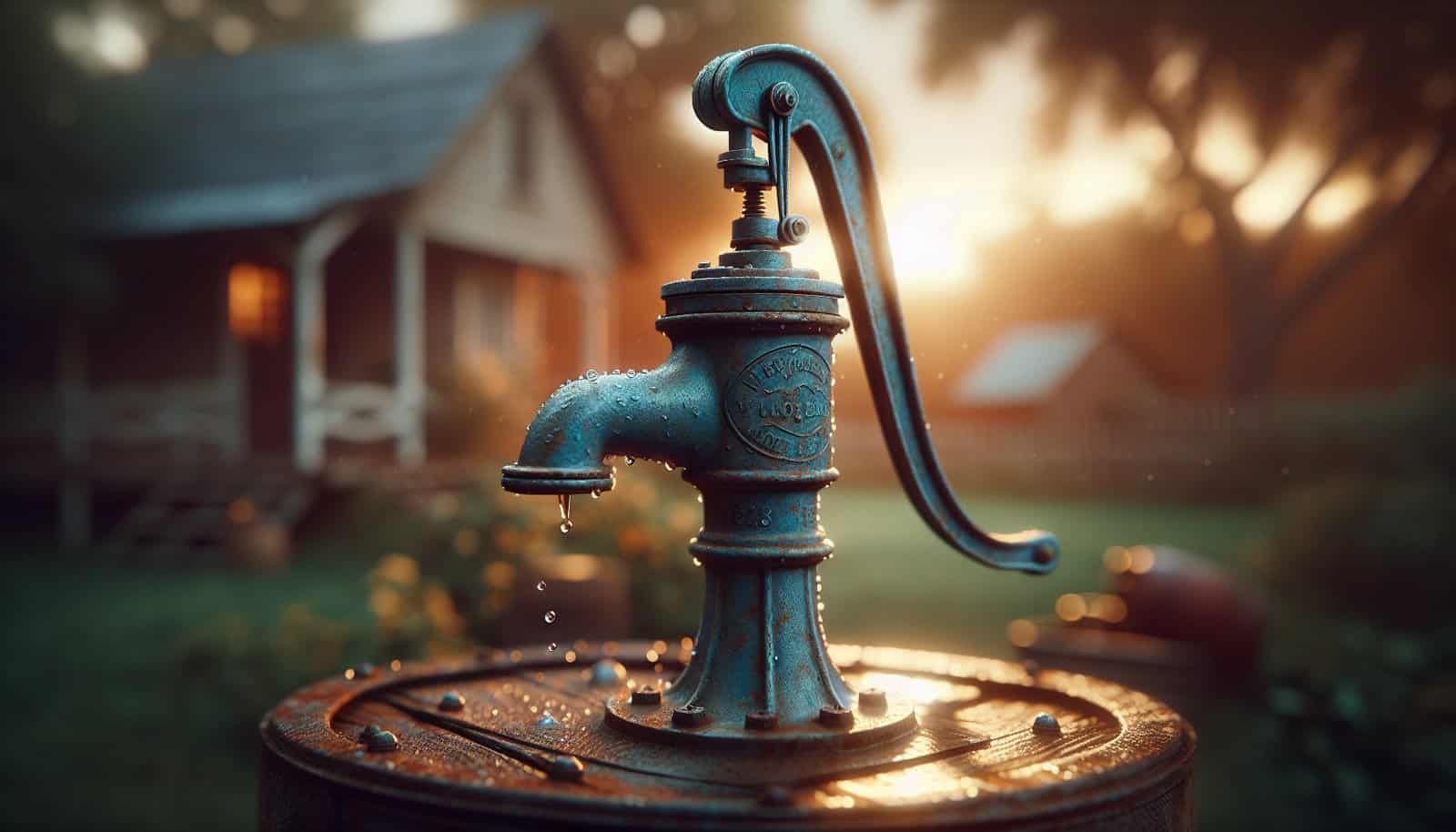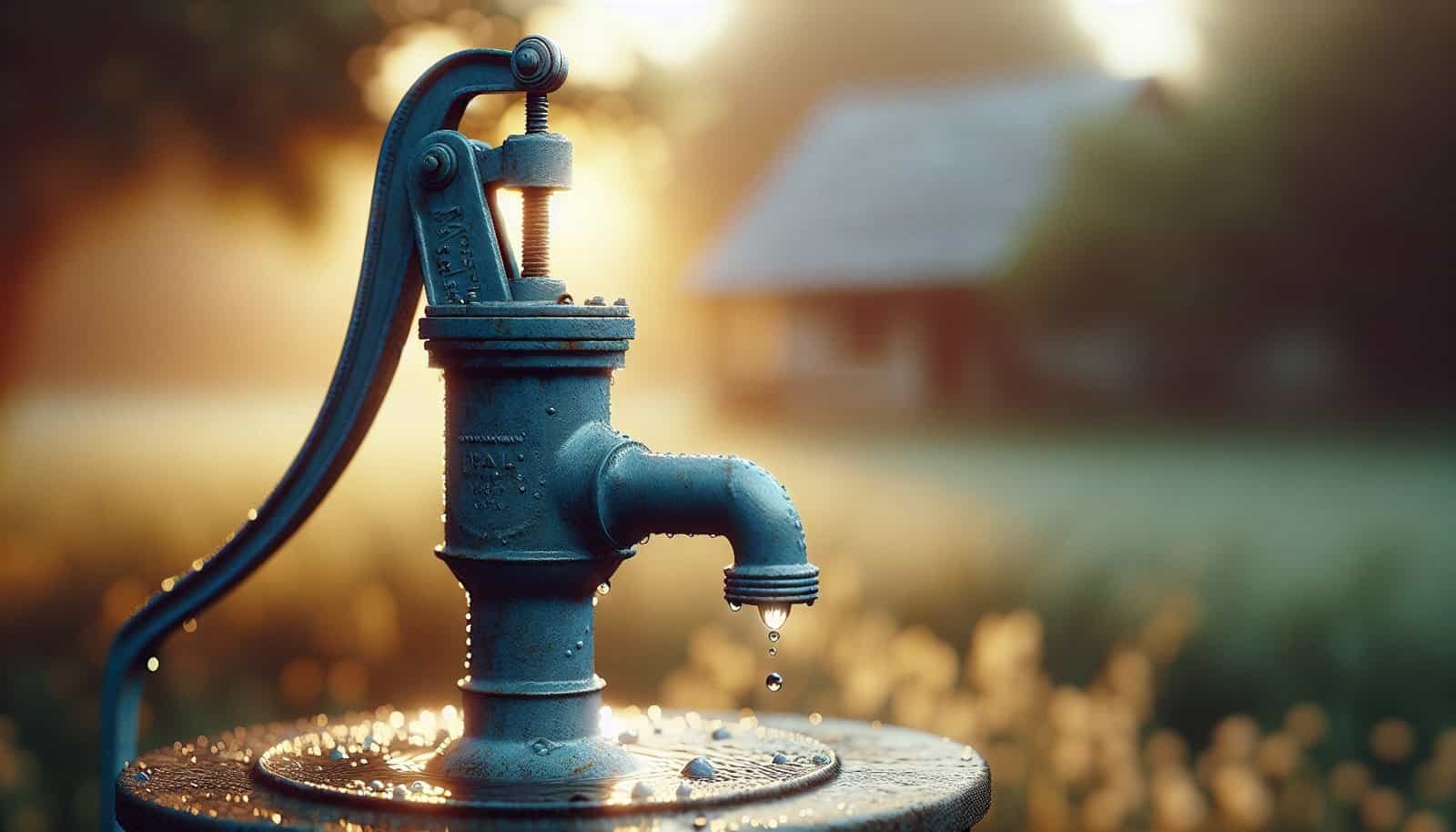Have you ever wondered how long your residential water well will last and what you can do to get the most life out of it?

How Long Does A Residential Water Well Last?
This is a common question for homeowners who rely on well water. You’ll find that a well’s lifespan isn’t a single fixed number — it depends on many factors including construction quality, geology, maintenance, and equipment. Below you’ll learn realistic lifespans for each component, signs of trouble, maintenance recommendations, and answers about installing solar-powered pumps for wells.
Typical Lifespans of Well Components
Understanding the expected lifespan of each part of your well helps you plan for repairs and replacements. Each component has different wear patterns and failure modes.
Well casing and casing materials
The casing is the pipe that lines your well bore and prevents collapse and contamination. Steel casings can corrode in certain conditions, while PVC is more corrosion-resistant but can be damaged by freezing or improper installation.
- Steel casings often last 20–50 years depending on water chemistry and soil conditions.
- PVC casings can last 50 years or more if properly installed and protected from sunlight and mechanical stress.
Well screen and intake
The screen filters out sand and silt where your well draws water from the aquifer. If the screen becomes clogged or damaged, you’ll see reduced performance and increased drawdown.
- Well screens often last 20–40 years but may fail sooner in sandy or corrosive formation conditions.
Submersible pump
The submersible pump sits below the water level and pushes water up into your home. Its life depends on the pump quality, water chemistry, how often it cycles, and whether it runs dry.
- Typical life: 8–15 years. High-quality pumps with proper maintenance can last longer.
Jet pumps (surface pumps)
Jet pumps are used for shallower wells or where a submersible pump is not installed. They sit above ground and can be easier to maintain.
- Typical life: 10–20 years, depending on service and usage.
Pressure tank
The pressure or bladder tank reduces pump cycling and maintains steady pressure. Tank conditions and corrosion dictate lifespan.
- Typical life: 5–15 years for bladder tanks; steel non-bladder tanks can last longer if well-maintained but may corrode.
Piping and plumbing
Pipes from your well to the house are subject to physical stress, freezing, and corrosion. Material choice matters.
- Copper and PEX can last decades (30+ years), while galvanized iron typically fails sooner (10–20 years).
Well cap and sanitary seal
These protect your well from surface contamination. A damaged cap is a quick pathway for bacteria and debris.
- Typical life: Replace when damaged or if vent becomes clogged; caps commonly last 10–20 years.
Grouting and annular seal
Seals between the casing and borehole protect against surface contamination migrating down the outside of the casing.
- Proper grout can last decades, but poor installation can lead to contamination quickly. If compromised, regrouting can be required.
Factors That Determine How Long Your Well Lasts
Knowing what makes one well last longer than another helps you make the right choices. You’ll see that both natural and human factors play roles.
Geology and aquifer characteristics
The composition of the rock and soil affects how the well is drilled and how water flows to it. Hard rock wells behave differently from shallow sand/gravel wells.
- Wells in fractured bedrock can last very long if stable, but yield may change over time.
- Shallow wells in unconsolidated sands may clog faster due to silt and movement.
Water chemistry
Corrosive water (high acidity, high dissolved solids, or corrosive gases) accelerates metal corrosion and can damage pumps and piping.
- If your water is acidic or high in iron/sulfur, components may fail sooner unless corrosion-resistant materials are used.
Pumping rate and drawdown
How often and how much water you pump affects mechanical wear and aquifer stress. Over-pumping can reduce lifespan by causing more frequent pump cycles and by lowering the water table.
- High cycling and frequent starts/stops increase pump wear; proper tank sizing and controls reduce cycling.
Installation quality
A well-built well with proper casing depth, screen placement, sanitary seal, and pump installation will typically last longer than a poorly installed one.
- Experienced contractors with proper permits generally produce longer-lasting wells.
Maintenance and care
Regular maintenance extends life considerably. Simple tasks like checking pressure, testing water quality annually, and protecting the wellhead from contamination matter.
- Neglected wells fail sooner; pump failures and contamination are common when maintenance is skipped.
Environmental and surface hazards
Flooding, nearby septic systems, chemical spills, and construction can introduce contaminants or damage the well.
- Wells in areas prone to flooding or agricultural runoff need extra protection and testing.
Average Lifespan Estimates (Quick Reference)
This table gives approximate lifespans so you can plan:
| Component | Typical Lifespan |
|---|---|
| Well casing (steel) | 20–50 years |
| Well casing (PVC) | 50+ years |
| Well screen | 20–40 years |
| Submersible pump | 8–15 years |
| Jet pump | 10–20 years |
| Pressure tank | 5–15 years |
| Piping (copper/PEX) | 30+ years |
| Piping (galvanized) | 10–20 years |
| Well cap | 10–20 years |
| Grout/annular seal | Decades if done correctly |

Signs Your Well or Components Are Failing
Being able to recognize early signs helps you act before a total failure or contamination event happens.
Reduced water quantity or pressure
If you notice lower flows at faucets or longer refill times for your cistern, the pump or aquifer yield may be declining. This can be from pump wear, clogged screen, or reduced aquifer levels.
Increased sand or sediment in water
A sudden increase in sandy water often indicates screen failure or erosion around the screen. Pumping with sand present increases wear and can lead to pump seizure.
Odd noises or frequent cycling
Humming, grinding, or unusual sounds from the pump or motor mean mechanical trouble. Short cycling (pump frequently turning on and off) usually means a pressure tank problem.
Unpleasant taste, odor, or discoloration
If your water becomes smelly (sulfur), metallic, or cloudy, this signals changes in water chemistry or contamination — test immediately.
Contamination indicators
Positive bacterial tests, nitrates, or chemical contamination are signs you must act to protect health. You’ll need testing and possibly well rehabilitation or alternate water while you solve the problem.
Regular Maintenance Tasks and Schedule
A modest maintenance plan prevents many failures. Follow these recommended tasks to maximize well life.
Yearly tasks
- Test water for bacteria, nitrates, and any local contaminants of concern.
- Inspect visible well components (cap, vent, piping) for damage or loose fittings.
- Check pressure tank for correct precharge and pressure.
Every 3–5 years
- Test for broader suite of contaminants (heavy metals, VOCs) if local land use suggests risk.
- Check electrical connections and control switches for wear.
Every 7–10 years (or as needed)
- Have a licensed well contractor video-inspect the well bore and screen if you notice sand or reduced yield.
- Consider pump evaluation or replacement if it’s older or showing issues.
After any event
- After flooding, septic system failure, or any nearby chemical spill, test your water immediately and disinfect the well if necessary.

Well Rehabilitation and Repairs
If parts of your well are failing, there are rehabilitation options that can restore performance and extend life.
Well cleaning and redevelopment
Cleaning a clogged screen or removing biofouling and mineral scale can restore yield without full replacement. Techniques include airlifting, surging, and chemical treatment.
- Rehabilitation can extend screen life and improve pump performance.
Pump replacement or rebuilding
If your pump fails or shows wear, replacement is often the best option. Rebuild kits are possible for some pumps, but labor and parts can make replacement more economical.
Regrouting and sealing
If annular seals are compromised, regrouting can restore sanitary protection. This is a technical job best done by professionals.
Lining or deepening
In some cases, you can line a well or deepen it to access a better water-bearing stratum. These are major interventions but can restore long-term service.
Cost Considerations
Knowing approximate costs helps you budget for long-term ownership of a well.
Typical cost ranges (ballpark)
- Annual water test: $50–$300 depending on the number of parameters.
- Pressure tank replacement: $300–$1,200 (including labor).
- Submersible pump replacement: $800–$3,000+ (depending on depth and pump size).
- Well cleaning/redevelopment: $300–$2,000 depending on method and severity.
- Well drilling (new well): $5,000–$20,000+ depending on depth and geology.
Costs vary widely by region, depth, and local labor rates. Always get multiple quotes and verify licensing and insurance.

Extending the Life of Your Well
You can proactively extend the service life of your well and its components with simple practices.
Protect the wellhead and surroundings
Maintain a secure, elevated well cap, keep chemicals and fuel storage away, divert surface runoff, and avoid driving heavy equipment near the well.
Manage water use
Avoid excessive pumping and install water-efficient fixtures. Stagger high-demand activities to reduce continuous heavy draw that stresses pumps and aquifers.
Install proper controls and tank sizing
A correctly sized pressure tank and reliable controls prevent short cycling and reduce pump wear.
Use corrosion-resistant materials
If water chemistry is corrosive, use PVC casings, stainless steel components, and corrosion-resistant fittings.
Treat water appropriately
Address water quality issues like iron, sulfur, or acidity with appropriate treatment systems to reduce internal corrosion and scaling.
Testing and Monitoring Protocols
Regular testing is central to both safety and understanding your well’s condition.
Basic annual testing
Test for total coliform and E. coli bacteria and nitrates annually, plus any local contaminants of concern.
Expanded testing every few years
Include tests for hardness, pH, iron, manganese, total dissolved solids (TDS), and any region-specific contaminants like arsenic or VOCs.
Record keeping
Keep records of yields, pump service dates, water tests, and any rehabilitation. These data will help a contractor diagnose problems faster and establish trends.

When to Replace the Well vs. Repair Components
Deciding to repair or replace depends on the condition of the borehole and the cost-effectiveness of repairs.
- Repair or rehabilitate when problems are limited to screens, pumps, or seals.
- Replace the well when structural failure exists (caving borehole, severely corroded casing), when aquifer yield has permanently declined, or when repeated costly repairs exceed the cost of a new well.
- Consult experienced local drilling contractors and consider obtaining more than one opinion.
Health and Safety Concerns
Contaminated well water is a health risk. You should act quickly if tests show contamination.
Bacterial contamination
If tests show bacteria, don’t drink the water. Use bottled water until the well is disinfected and tests confirm it is safe.
Chemical contamination
Chemical contaminants may require activated carbon, reverse osmosis, or permanent connection to alternative water. Some problems may require new well location if contamination cannot be reliably remediated.
Legal and regulatory issues
You may be required to notify buyers or local authorities about contamination or well failures depending on local laws. Keep documentation of tests and remedial actions.
Choosing a Contractor
A qualified, licensed, and insured contractor is essential for long-term wells.
- Verify licensing, insurance, and references.
- Ask about local experience and familiarity with regional geology.
- Request detailed written estimates and warranties.
- Avoid unlicensed “cheaper” alternatives that can create costly problems down the road.
Can You Install Solar-Powered Pumps for Wells?
Yes — you can install solar-powered pumps for residential wells, and they can be an excellent option in many situations. Solar pumping is particularly useful where grid power is unreliable, expensive, or unavailable.
Types of solar well pumps
- DC submersible solar pumps: Designed to run directly from photovoltaic (PV) panels. Common for deep wells when matched with proper controllers.
- AC submersible pumps with inverters: Use solar panels plus an inverter to convert DC to AC for standard pumps.
- Surface solar pumps: Used for shallow wells, springs, or irrigation; typically less expensive but limited to modest lift and flow.
Advantages of solar pumps
- Reduced or eliminated electricity costs.
- Off-grid capability—ideal for rural properties.
- Lower operating emissions.
- Long-term reliability if sized and maintained correctly.
Limitations and considerations
- Solar pumps depend on sunlight; you’ll need battery backup or grid tie if you want water reliably at night or during extended cloudy periods.
- Initial cost is higher than a conventional grid-powered pump for comparable capacity.
- System sizing must match well depth, required flow, and seasonal demand.
- Some solar pumps produce variable flow depending on solar input; you may need storage tanks to even out supply.
Sizing and system components
A solar pumping system includes PV panels, pump (DC submersible or AC with inverter), mounting hardware, controller/MPPT (for efficiency and protection), wiring, and often a battery or storage tank.
Key sizing steps you’ll do with a professional:
- Determine required daily water volume (gallons/day).
- Establish maximum pump depth and drawdown.
- Select pump that provides required flow at your well’s total dynamic head.
- Design PV array to supply required energy during hours of sunlight.
- Include storage (tank) and possibly batteries for demand smoothing.
Cost and payback
- Upfront costs vary widely but typically range from a few thousand dollars for small systems to $10k–$30k+ for larger, deeper well systems.
- Savings depend on local electricity rates and water demand. In off-grid situations, solar often pays back over many years by avoiding generator fuel and grid extensions.
Maintenance and lifespan
- PV panels typically last 25+ years with minimal maintenance.
- Pumps and controllers have their usual lifespans (pumps 8–15 years). Proper maintenance ensures longevity.
- Batteries (if used) require replacement sooner (5–15 years depending on chemistry).
Practical scenarios where solar pumping makes sense
- Off-grid homes without reliable grid access.
- Remote cabins, livestock or irrigation needs.
- Locations with high electricity costs or incentives for renewable energy.
- Backup water systems for grid-tied wells to provide resilience in outages.
Comparing Pump Options (Table)
| Feature | Submersible (Grid) | Submersible (Solar DC) | Surface/Jet Pump | Solar Surface Pump |
|---|---|---|---|---|
| Typical lifespan | 8–15 yrs | 8–15 yrs | 10–20 yrs | 8–15 yrs |
| Suitable for deep wells | Yes | Yes (if designed) | Usually no | Shallow only |
| Power source | Grid/Generator | Solar panels (± batteries) | Grid/Generator | Solar panels |
| Initial cost | Moderate | Higher | Lower | Moderate |
| Operational cost | Electricity | Minimal | Electricity | Minimal |
| Reliability | High (with grid) | High with good design | High | Variable (sun-dependant) |
| Maintenance | Moderate | Moderate | Moderate | Moderate (PV minimal) |
Steps to Install a Solar Pump System
If you’re considering solar, follow these steps to maximize success.
- Get a professional well assessment to confirm depth, yield, and total dynamic head.
- Calculate your daily water needs realistically.
- Choose an appropriately rated pump and controller matched to the well conditions.
- Design the PV array with a qualified installer and include storage or backup strategy.
- Obtain any necessary permits and ensure compliance with local codes.
- Install by licensed professionals and commission the system with monitoring.
- Keep maintenance intervals for both pump and PV system.
Common Questions and Quick Answers
- How often should you test well water? Annually for bacteria and nitrates; more frequently if you suspect contamination or after certain events.
- What’s a sign the pump is nearing the end of its life? Reduced flow, increased noise, and frequent tripping of motors or breakers.
- Can you switch from grid to solar later? Yes, many systems can be retrofitted with solar arrays and controllers to power existing pumps.
- Do solar pumps work in winter? Yes, if sized correctly and if panels are kept clear of snow; storage tanks help ensure supply during low-sun periods.
Planning for Long-Term Ownership
If you plan to stay in your home long-term or pass it on, consider these practices to protect your investment:
- Keep detailed records of well construction, pump installations, tests, and repairs.
- Budget for periodic pump replacement and unplanned repairs.
- Inspect and protect the wellhead and surroundings from contamination and physical damage.
- Consider modern upgrades like variable frequency drives (VFDs) or energy-efficient pumps to reduce wear and energy use.
Final Thoughts
Your residential well is a long-term asset that can last many decades when built and cared for properly. While some components like pumps and tanks will need replacement every decade or two, the well itself can continue providing safe water for much longer with correct materials, maintenance, and attention to water quality. If you’re considering solar-powered pumps, they’re a viable and often beneficial option—especially for off-grid use—so long as you design the system to match your well and water needs.
If you’d like, you can tell me your well depth, current pump type, and daily water usage, and I can help you estimate a suitable solar pump system or suggest a maintenance plan tailored to your situation.
